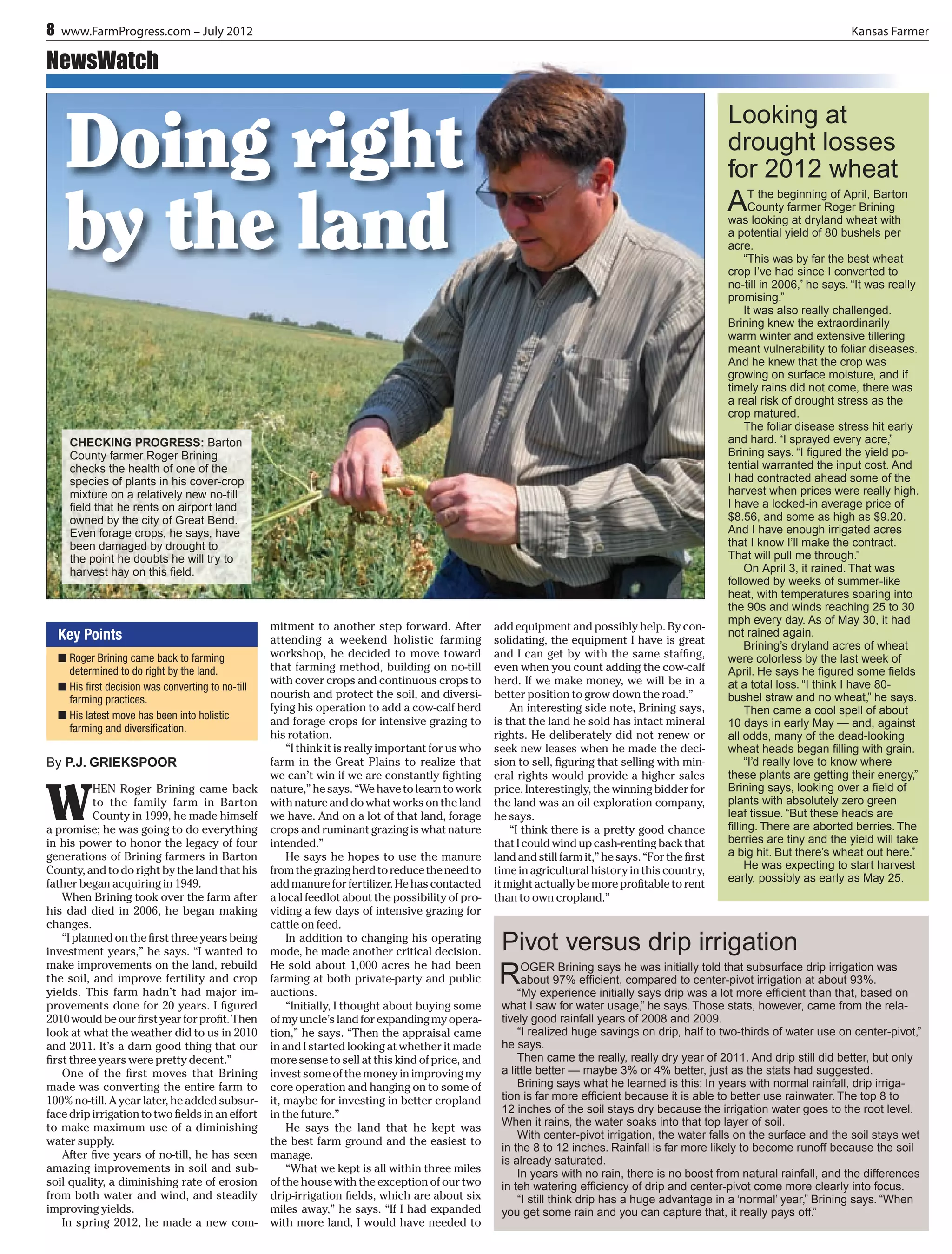Roger Brining, a farmer in Barton County, has implemented no-till and holistic farming practices to improve soil health and crop yields amidst drought conditions. Despite challenging weather and drought impacting his crops, he remains committed to sustainable practices, including subsurface drip irrigation and diversifying with livestock. He has also strategically sold land to focus on maximizing the efficiency and profitability of his core farming operation.
